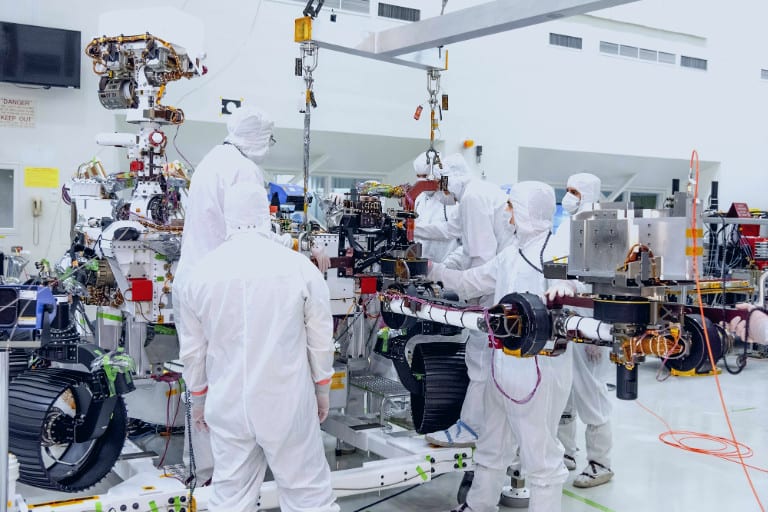Want to Work With NASA or JPL? 4 Tips
There’s probably not an engineer in existence who hasn’t at least thought about what it would be like to work with companies and organizations that are exploring the furthest reaches of space. And, for plenty of engineers, working with NASA or JPL would be the dream of their careers.
Tom McCarthy, our VP of Business Development, is well qualified to give tips on how to turn that dream into a reality. After graduating from Notre Dame, Tom worked for JPL, and now works as a contractor with both JPL and NASA, developing robotics for space missions.
Tom recently sat down with Karen Roby from TechRepublic to discuss his career and how the lessons he’s learned could help others looking to work in space robotics.
Here are a few of Tom’s top tips.
1. Understand What Your Client or Potential Employer Wants
“Space exploration” and “space robotics” are pretty big fields, and every employer or lab has a different focus and set of priorities. It’s important to understand what those are, and how you can help them achieve their goals.
“For JPL, they’ve put a lot of energy into Mars applications. And so, developing a sensitivity to those environments and what matters and what’s critical, to make sure that you provide a good solution and product that’s applicable to that environment, is really important.”
2. Remember That Relationships Matter
Companies and organizations like NASA and JPL are made up of people. And even though engineers might get an undeserved-in-our-opinion bad rap for their interpersonal skills, relationships still matter.
Those relationships can be key to getting included on interesting, or even extradiordinary, projects.
“When they’re looking to try to do something new, something revolutionary, that there’s just a good basis, a good foundation of understanding and communication in order to execute those things.”
3. Learn to Take On Risky Challenges & Minimize the Risk
Space exploration is inherently risky, and successful space exploration depends on minimizing that risk. Individuals and companies who are willing to take on risky challenges, and then do the hard work of lowering that risk, are likely to find rewarding partnerships in the space industry.
“Risk is a big thing for them, making sure that they have a good managed path to risk. They want to be successful. […] being responsive, making sure that we follow through on certain commitments. And deliver on capability so that they feel comfortable that they can rely on that, and that drives their risk down. And that makes for a good partnership.”
4. Be Adaptable
One of the lessons that 2020 reinforced is the need for flexibility. No-one was expecting a pandemic that would limit personal interaction for more than a year, or the supply chain shortages it caused. But NASA and its contractors found ways to work through it safely, while delivering on the projects to which they committed.
“The ability to evolve has been critical. To try to figure out what are the tools and the environment that make the staff comfortable and allow you to stay in touch with them. To make sure that they have what they need in order to execute their job, make certain work arrangements for them and to be flexible.”
Looking for more tips on success as an employee or contractor in this space? Check out the full interview below.
